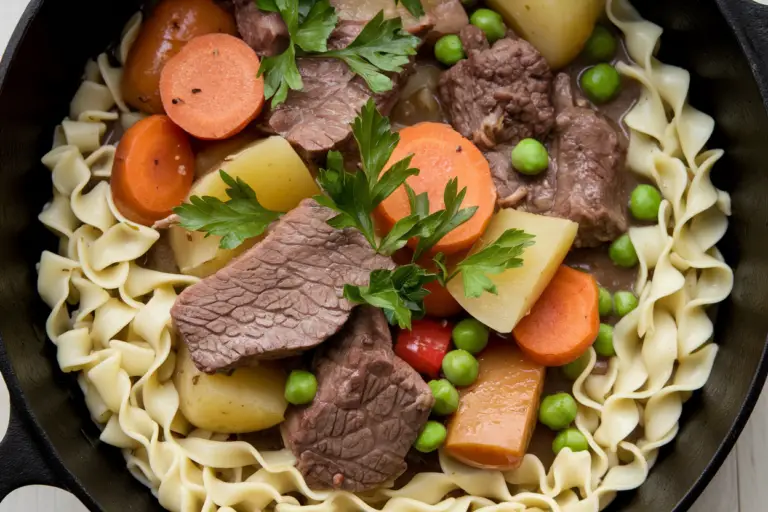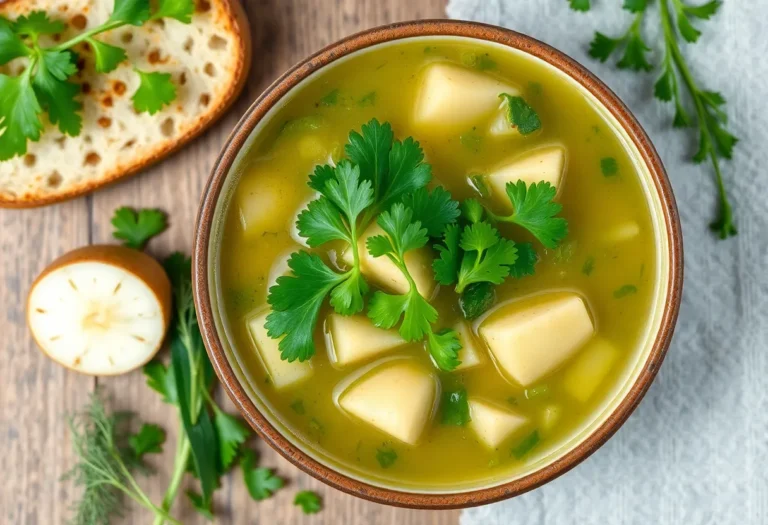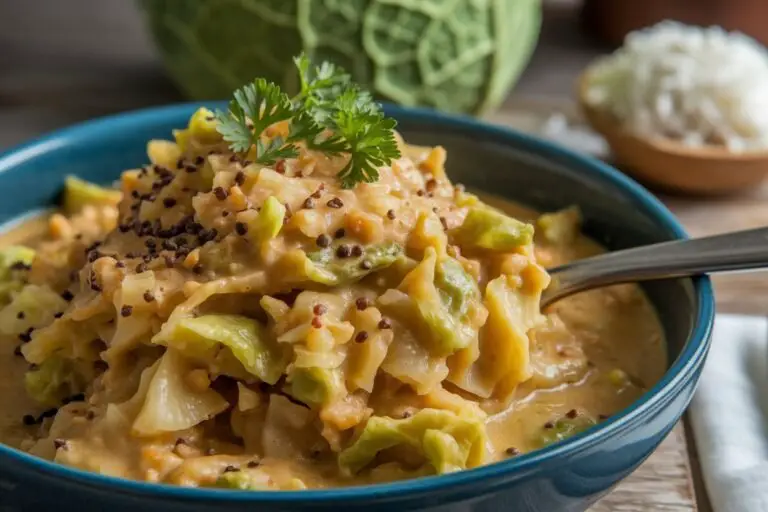Rustic Vegetable Beef Stew – Hearty, Cozy, and Full of Flavor
There’s nothing like a pot of beef stew simmering away to make a house feel like home. This rustic version is all about big flavor, simple ingredients, and that slow-cooked comfort you crave on a chilly day. Tender beef, soft vegetables, and a rich, savory broth come together in a way that feels both familiar and special.
It’s the kind of meal you ladle into deep bowls, serve with crusty bread, and let everyone help themselves. No fussy steps, no trendy tricks—just honest, good cooking that tastes even better the next day.
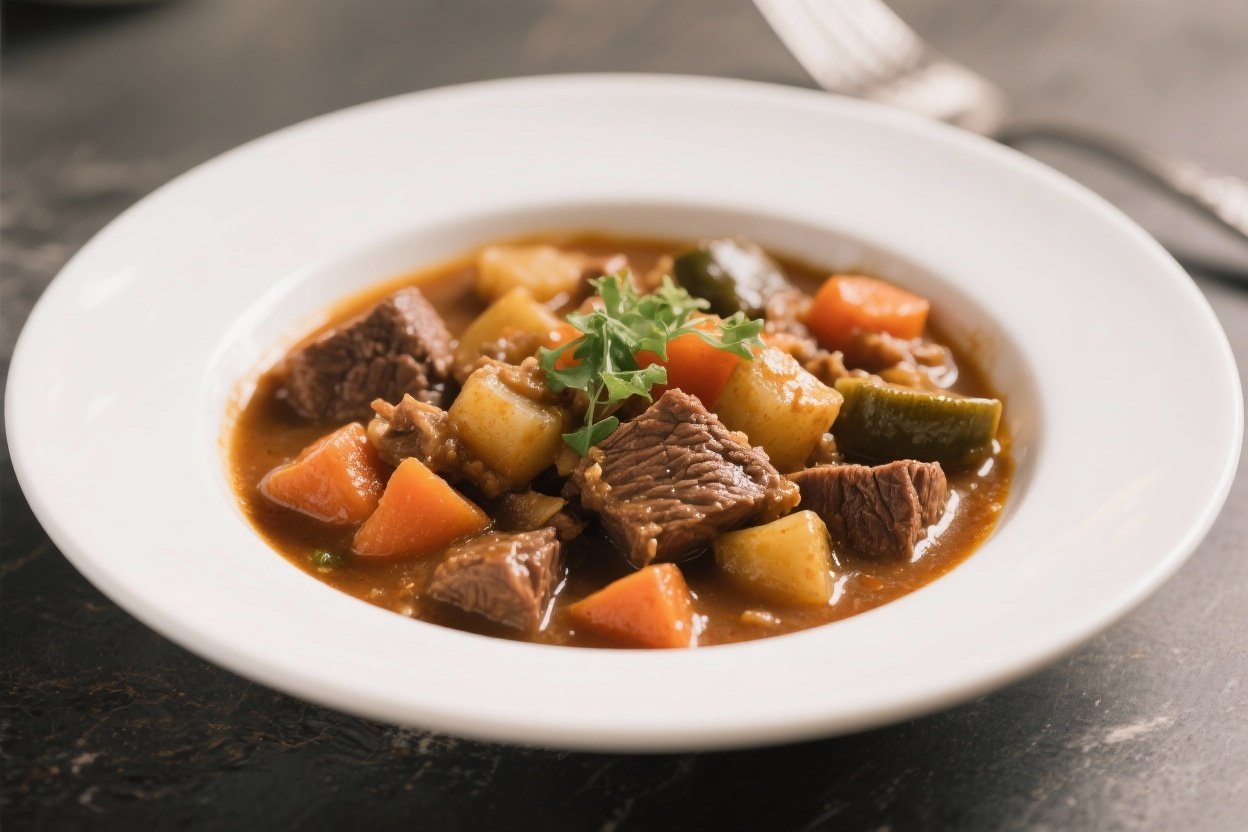
Rustic Vegetable Beef Stew - Hearty, Cozy, and Full of Flavor
Ingredients
Method
- Season the beef: Pat the beef dry with paper towels. Toss with 1.5 teaspoons salt and 1 teaspoon pepper.Dry meat browns better and gives you that deep flavor.
- Brown in batches: Heat oil in a heavy pot or Dutch oven over medium-high. Sear the beef in batches until deeply browned on at least two sides. Don’t crowd the pan.Transfer to a bowl and keep the browned bits in the pot.
- Build the base: Reduce heat to medium. Add the onion with a pinch of salt and cook 4–5 minutes until softened. Stir in garlic for 30 seconds, then add tomato paste and cook 1–2 minutes until it darkens slightly.
- Optional thickener: Sprinkle in the flour and stir for 1 minute.This helps the stew thicken slightly later without being pasty.
- Deglaze: Pour in the red wine, scraping up the browned bits with a wooden spoon. Let it simmer for 2–3 minutes to reduce by about half.
- Add liquids and seasonings: Return beef and any juices to the pot. Add beef broth, Worcestershire, bay leaves, thyme, and smoked paprika if using.Bring just to a gentle simmer.
- Low and slow: Partially cover and simmer on low for 45 minutes, stirring occasionally. Keep it at a gentle bubble, not a rolling boil, for tender meat.
- Add hearty vegetables: Stir in carrots, potatoes, celery, and parsnip. Simmer another 30–40 minutes, until the vegetables are tender and the beef is fork-soft.
- Finish and balance: Remove bay leaves.Stir in peas and cook 2–3 minutes. Add vinegar to brighten the flavors. Taste and adjust salt and pepper.
- Rest and serve: Let the stew rest 10 minutes off heat.Garnish with chopped parsley and serve with crusty bread or over buttered noodles.
Why This Recipe Works
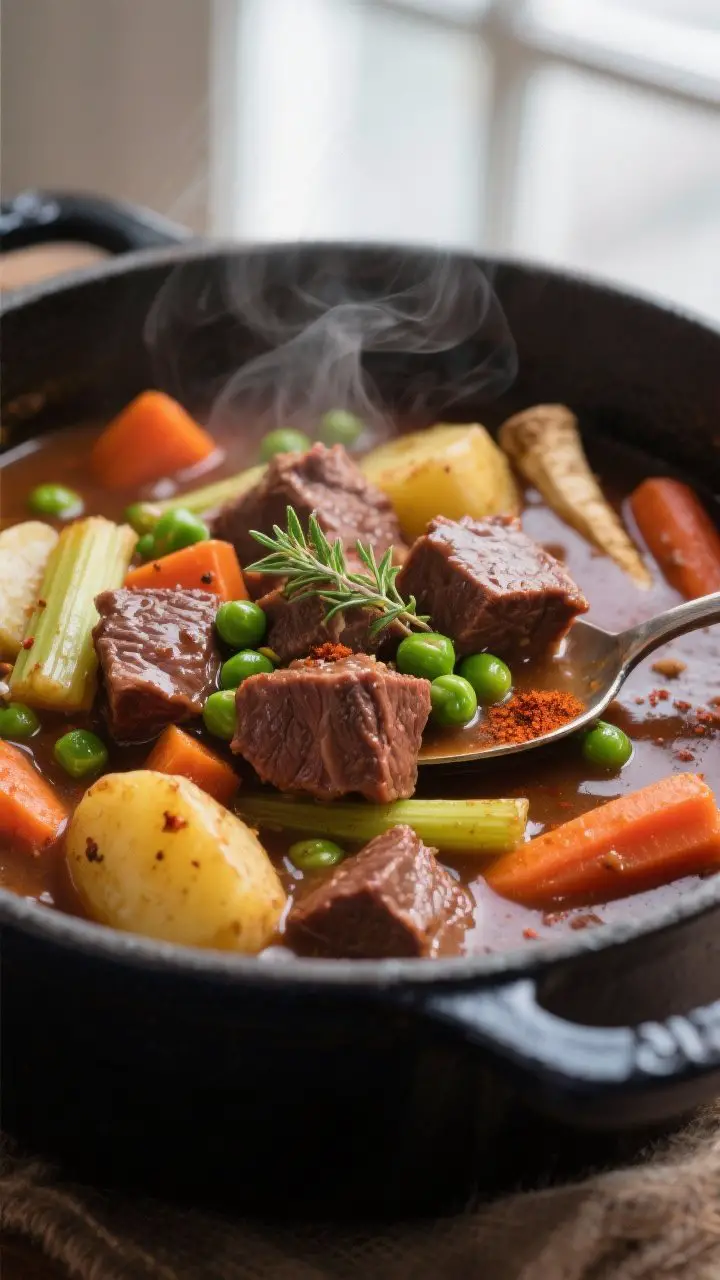
- Browned beef builds flavor: Searing the beef first creates a deep, savory base that makes the broth rich and satisfying.
- Layered aromatics: Onion, garlic, and tomato paste create a savory backbone that holds the stew together.
- Balanced vegetables: Carrots, potatoes, and celery add sweetness, texture, and body without overpowering the beef.
- Worcestershire and herbs: A dash of Worcestershire sauce and hearty herbs like thyme and bay leaf add complexity without much effort.
- Gentle simmer, tender meat: Low and slow cooking breaks down tough cuts, giving you spoon-tender beef and a silky broth.
Ingredients
- 2 pounds beef chuck, cut into 1.5-inch cubes
- 1.5 teaspoons kosher salt, plus more to taste
- 1 teaspoon freshly ground black pepper
- 2–3 tablespoons neutral oil (canola or avocado)
- 1 large yellow onion, diced
- 3 cloves garlic, minced
- 2 tablespoons tomato paste
- 2 tablespoons all-purpose flour (optional, for light thickening)
- 1 cup dry red wine (or extra broth)
- 4 cups beef broth, low-sodium
- 1 tablespoon Worcestershire sauce
- 3 carrots, peeled and cut into chunky pieces
- 3 medium Yukon Gold potatoes, cut into 1.5-inch chunks
- 2 celery stalks, sliced
- 1 parsnip, peeled and chunked (optional but great)
- 1 cup frozen peas (add at the end)
- 2 bay leaves
- 1 teaspoon dried thyme or 2 teaspoons fresh
- 1 teaspoon smoked paprika (optional, for warmth)
- 1 tablespoon apple cider vinegar or red wine vinegar (to finish)
- Fresh parsley, chopped, for garnish
How to Make It
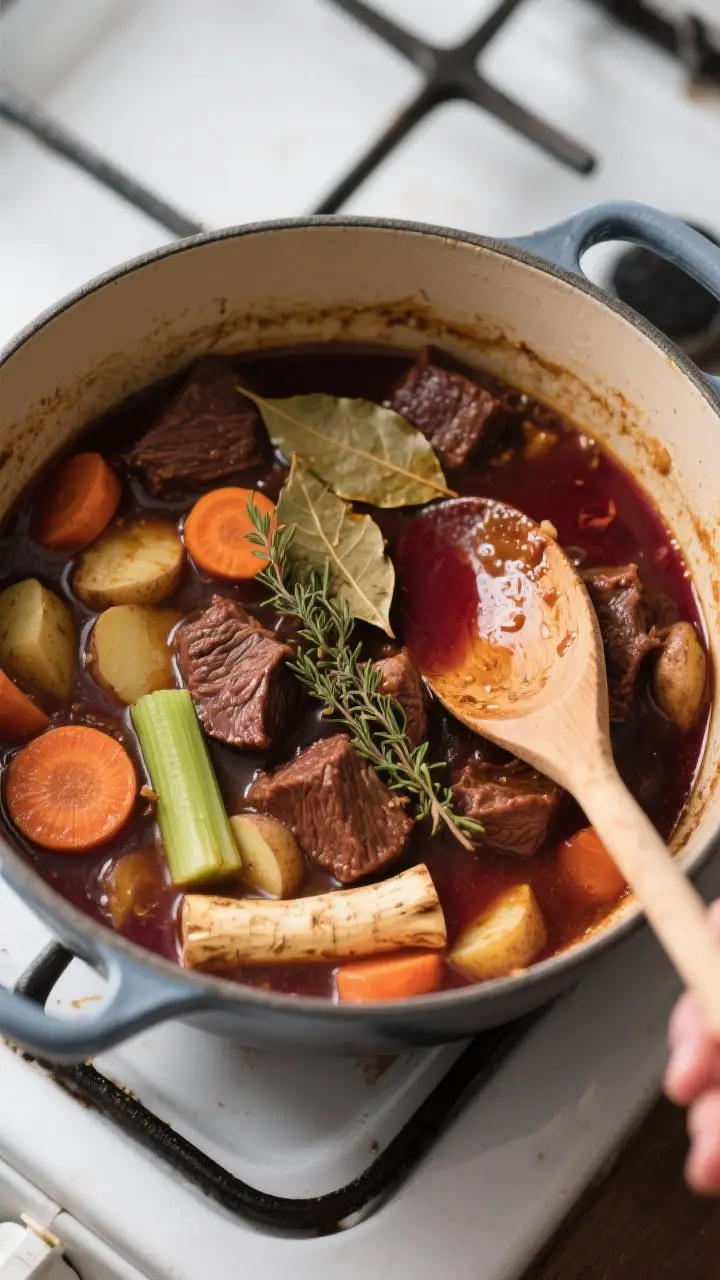
- Season the beef: Pat the beef dry with paper towels. Toss with 1.5 teaspoons salt and 1 teaspoon pepper.
Dry meat browns better and gives you that deep flavor.
- Brown in batches: Heat oil in a heavy pot or Dutch oven over medium-high. Sear the beef in batches until deeply browned on at least two sides. Don’t crowd the pan.
Transfer to a bowl and keep the browned bits in the pot.
- Build the base: Reduce heat to medium. Add the onion with a pinch of salt and cook 4–5 minutes until softened. Stir in garlic for 30 seconds, then add tomato paste and cook 1–2 minutes until it darkens slightly.
- Optional thickener: Sprinkle in the flour and stir for 1 minute.
This helps the stew thicken slightly later without being pasty.
- Deglaze: Pour in the red wine, scraping up the browned bits with a wooden spoon. Let it simmer for 2–3 minutes to reduce by about half.
- Add liquids and seasonings: Return beef and any juices to the pot. Add beef broth, Worcestershire, bay leaves, thyme, and smoked paprika if using.
Bring just to a gentle simmer.
- Low and slow: Partially cover and simmer on low for 45 minutes, stirring occasionally. Keep it at a gentle bubble, not a rolling boil, for tender meat.
- Add hearty vegetables: Stir in carrots, potatoes, celery, and parsnip. Simmer another 30–40 minutes, until the vegetables are tender and the beef is fork-soft.
- Finish and balance: Remove bay leaves.
Stir in peas and cook 2–3 minutes. Add vinegar to brighten the flavors. Taste and adjust salt and pepper.
- Rest and serve: Let the stew rest 10 minutes off heat.
Garnish with chopped parsley and serve with crusty bread or over buttered noodles.
How to Store
- Refrigerate: Cool completely, then store in an airtight container for up to 4 days. The flavors deepen by day two.
- Freeze: Portion into freezer-safe containers and freeze up to 3 months. Leave a little headspace for expansion.
- Reheat: Warm gently on the stove over low heat, adding a splash of broth or water if it thickens too much.
Microwave in short intervals, stirring between bursts.
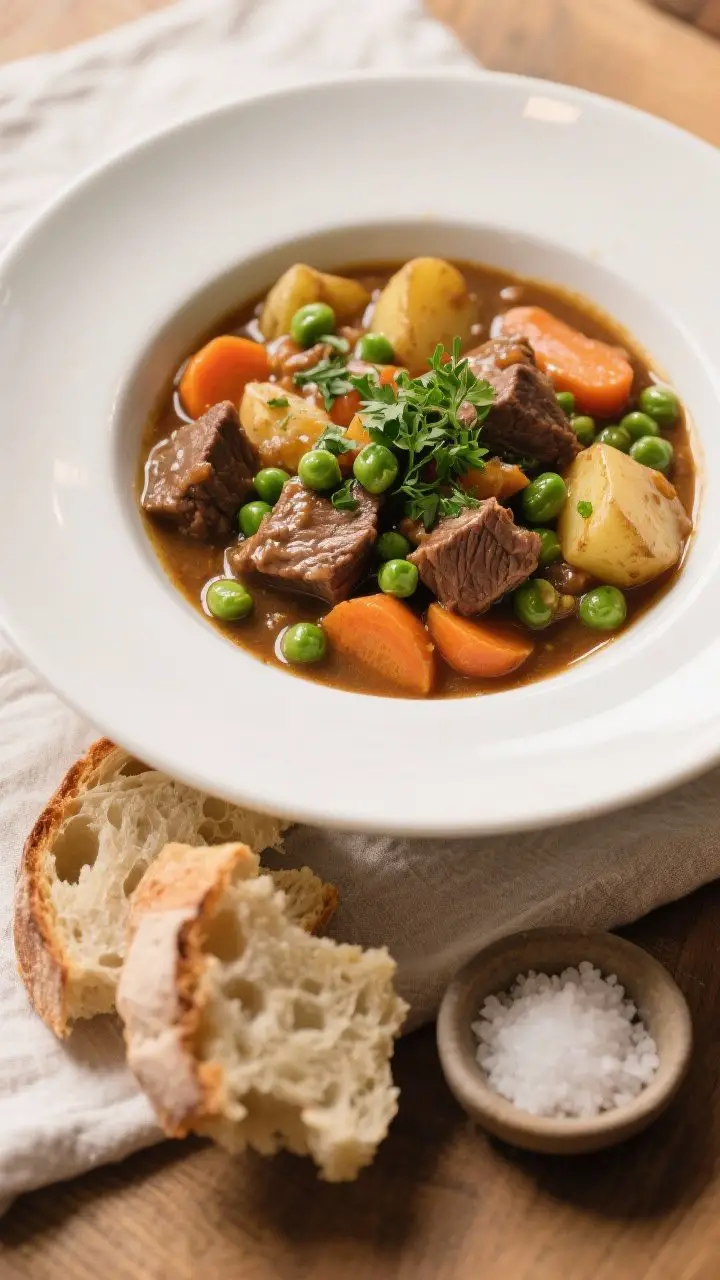
Why This is Good for You
- Protein and iron: Beef provides protein for muscle repair and iron for energy and focus.
- Fiber-rich veggies: Carrots, potatoes, and parsnips offer fiber, vitamin C, potassium, and antioxidants.
- Lower-sodium control: Using low-sodium broth and salting to taste helps keep sodium balanced.
- Satisfying and balanced: Protein, carbs, and veggies in one bowl means you stay full and energized without needing extra sides.
Common Mistakes to Avoid
- Skipping the sear: Browning the beef isn’t optional if you want a deep, rich stew. Pale meat leads to a flat-tasting broth.
- Boiling too hard: A rolling boil toughens the meat. Keep it at a gentle simmer for tenderness.
- Adding peas too early: Peas go in at the end so they stay bright and sweet, not mushy and gray.
- Overcrowding the pan: When searing, work in batches so the beef actually browns instead of steaming.
- Under-seasoning: Add salt in layers.
Taste after simmering and again before serving—you’ll likely need a final pinch.
- Forgetting acidity: A splash of vinegar at the end lifts the flavors and keeps the stew from tasting heavy.
Alternatives
- Slow cooker: Sear the beef and aromatics on the stovetop first. Transfer to slow cooker with broth, herbs, and veggies. Cook on low 7–8 hours or high 4–5 hours.
Add peas at the end.
- Pressure cooker/Instant Pot: Use sauté mode to brown. Add liquids and veggies, then cook on high pressure for 30 minutes with natural release for 10 minutes. Stir in peas after.
- No wine: Replace wine with more broth plus 1 teaspoon balsamic vinegar for depth.
- Different veggies: Swap parsnip for turnips, rutabaga, or mushrooms.
Sweet potatoes add a subtle sweetness and creamy texture.
- Gluten-free: Skip the flour or use a cornstarch slurry at the end (1 tablespoon cornstarch mixed with 1 tablespoon cold water) and simmer briefly to thicken.
- Herb variations: Rosemary, marjoram, or a touch of Italian seasoning work well. A pinch of crushed red pepper adds gentle heat.
FAQ
What cut of beef is best for stew?
Beef chuck is ideal. It has enough marbling to stay juicy and becomes tender with slow cooking.
📖 Get Access to 50+ Printable Smoothie Recipes Instantly! 🖨️
Boost your health with delicious smoothies! These easy-to-follow printable recipe eBooks are perfect for detoxing, fitness goals, and tasty plant-based living. Available for instant download on Etsy! 🌿✨
Pre-cut “stew meat” can work, but quality varies, so chuck you cut yourself is more reliable.
Can I make this stew ahead?
Yes. In fact, it tastes even better the next day. Make it, cool it, and refrigerate overnight.
Reheat gently on the stove and adjust seasoning before serving.
How can I thicken the stew without flour?
Let it simmer uncovered for a bit to reduce, or mash a few potato chunks into the broth. You can also add a cornstarch slurry at the end and simmer for 2–3 minutes.
What if my stew tastes bland?
Add a pinch of salt, a few grinds of pepper, and a splash of vinegar or Worcestershire. Brightness plus seasoning usually fixes a flat flavor.
Fresh herbs at the end also help.
Can I use chicken or vegetable broth?
Beef broth is best for depth, but chicken broth works in a pinch. If using vegetable broth, expect a lighter flavor; add a bit more Worcestershire and tomato paste to compensate.
How long should I simmer the stew?
Plan on about 1.5 to 2 hours total on the stovetop. The stew is ready when the beef is fork-tender and the vegetables are soft but not falling apart.
Is red wine necessary?
No, but it adds complexity.
If you skip it, use extra broth and a teaspoon of balsamic or red wine vinegar to add depth.
Can I add barley or beans?
Absolutely. Add 1/2 cup pearl barley with the vegetables and extend cooking until tender, or stir in a drained can of beans during the last 10 minutes to warm through.
Wrapping Up
Rustic Vegetable Beef Stew is the kind of meal that brings everyone to the table without much fuss. With a little browning, a gentle simmer, and a handful of pantry staples, you get a hearty pot of comfort that tastes like it cooked all day.
Make it once and you’ll keep it in your rotation for weeknights, Sunday suppers, and cozy leftovers. Keep some crusty bread nearby and enjoy every warm, savory spoonful.

